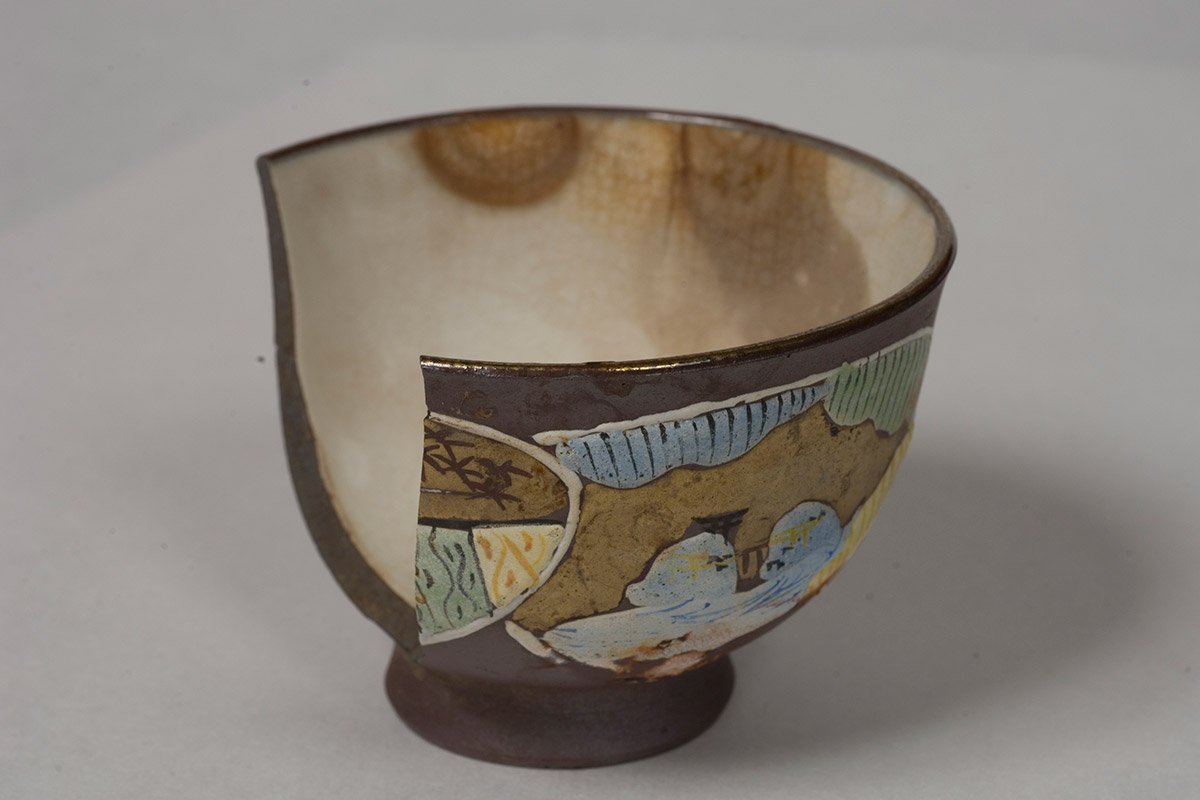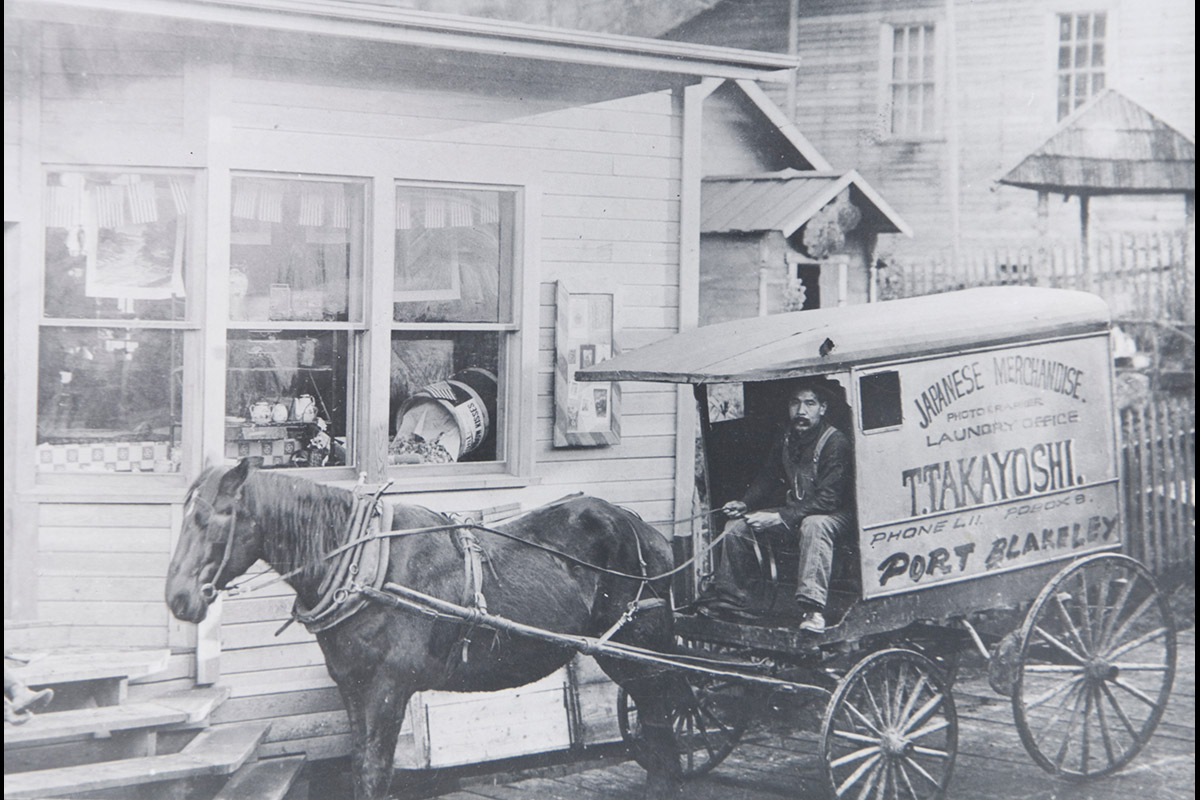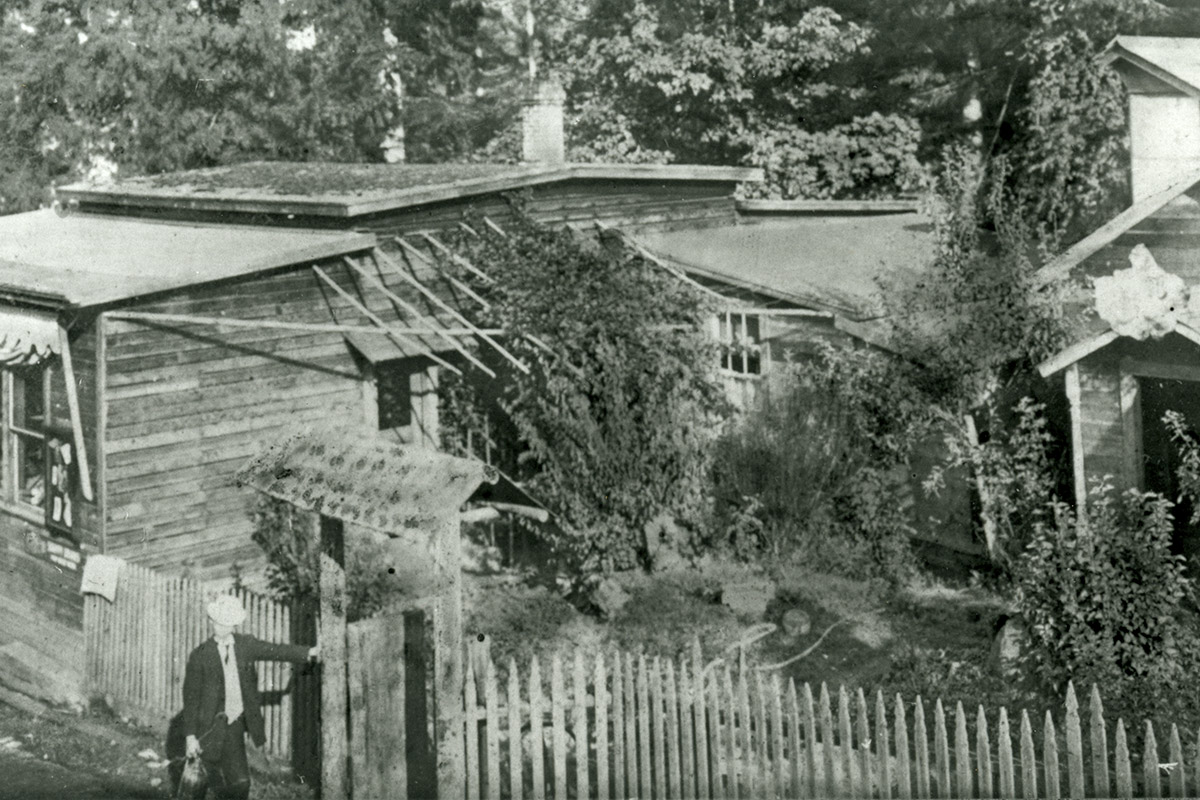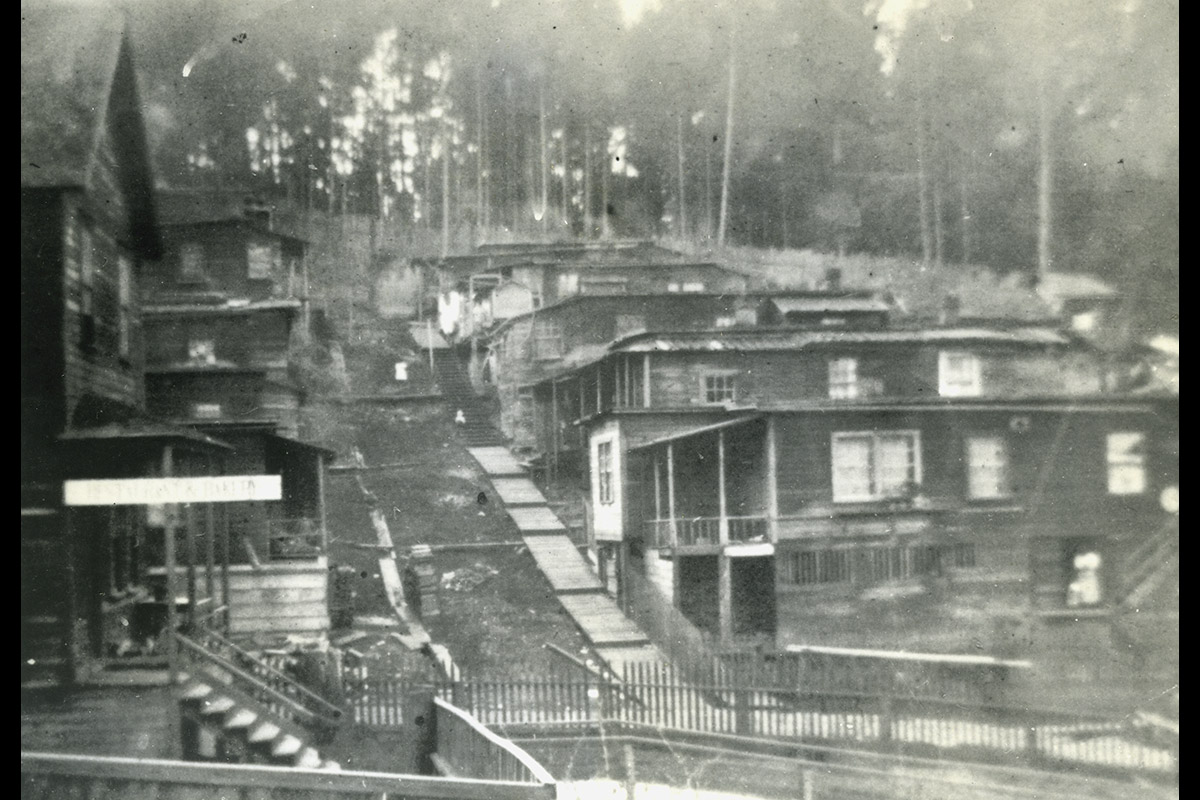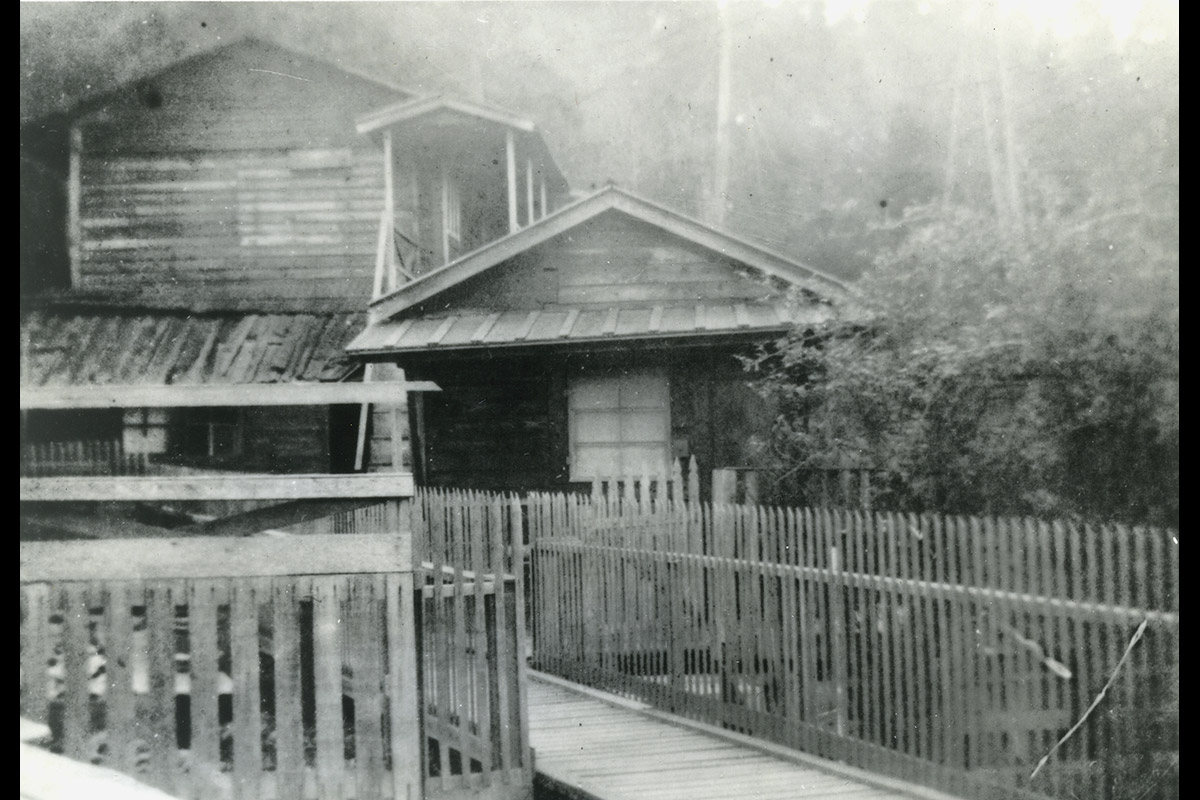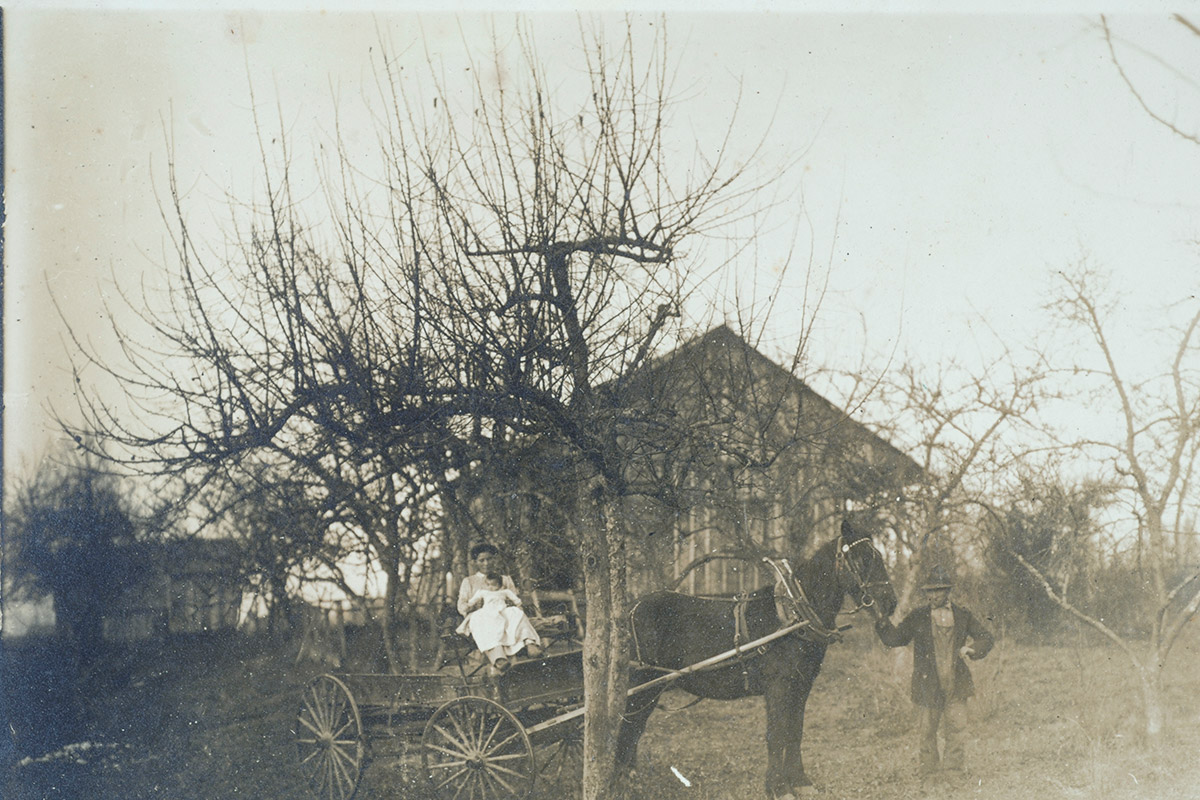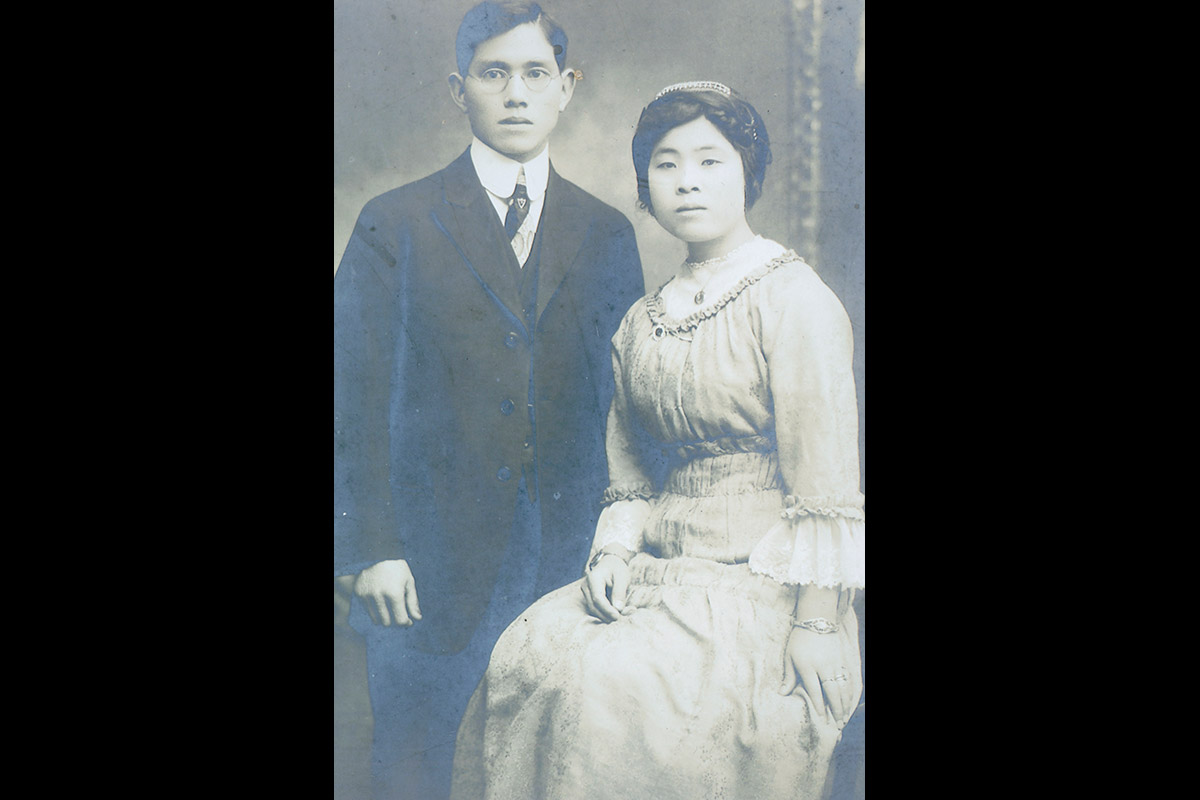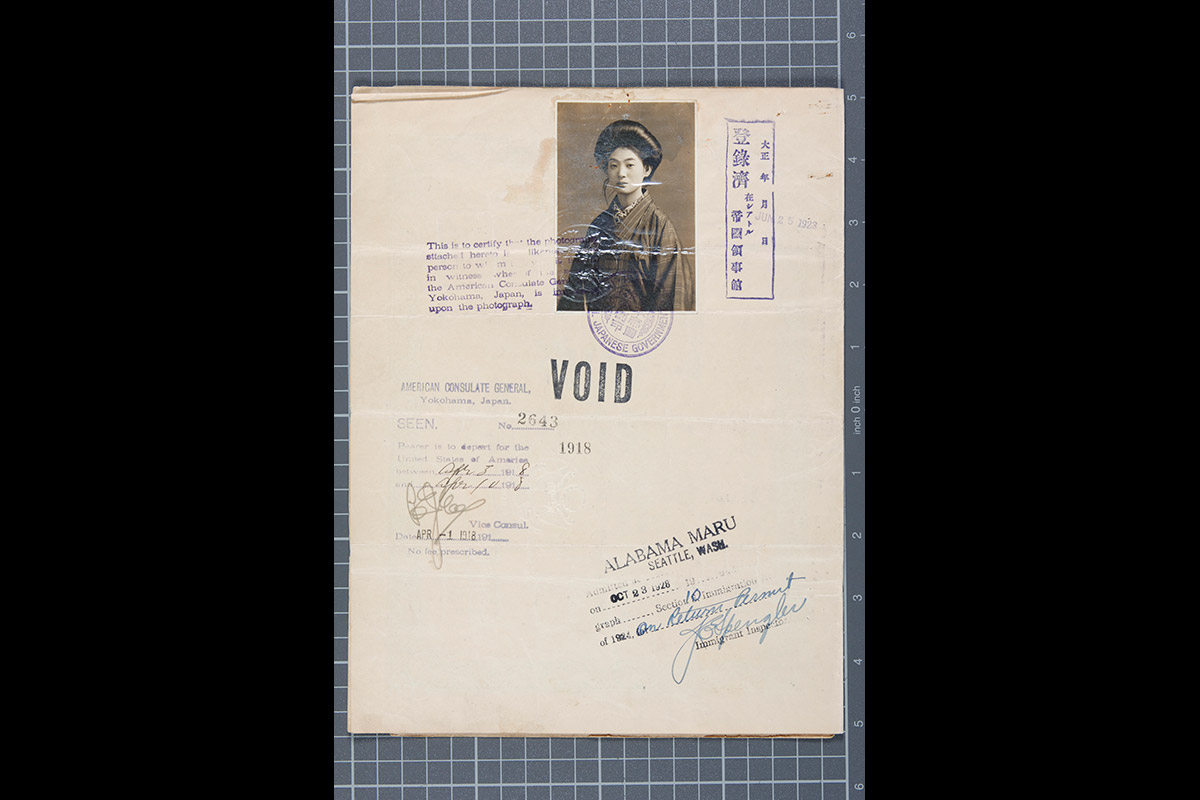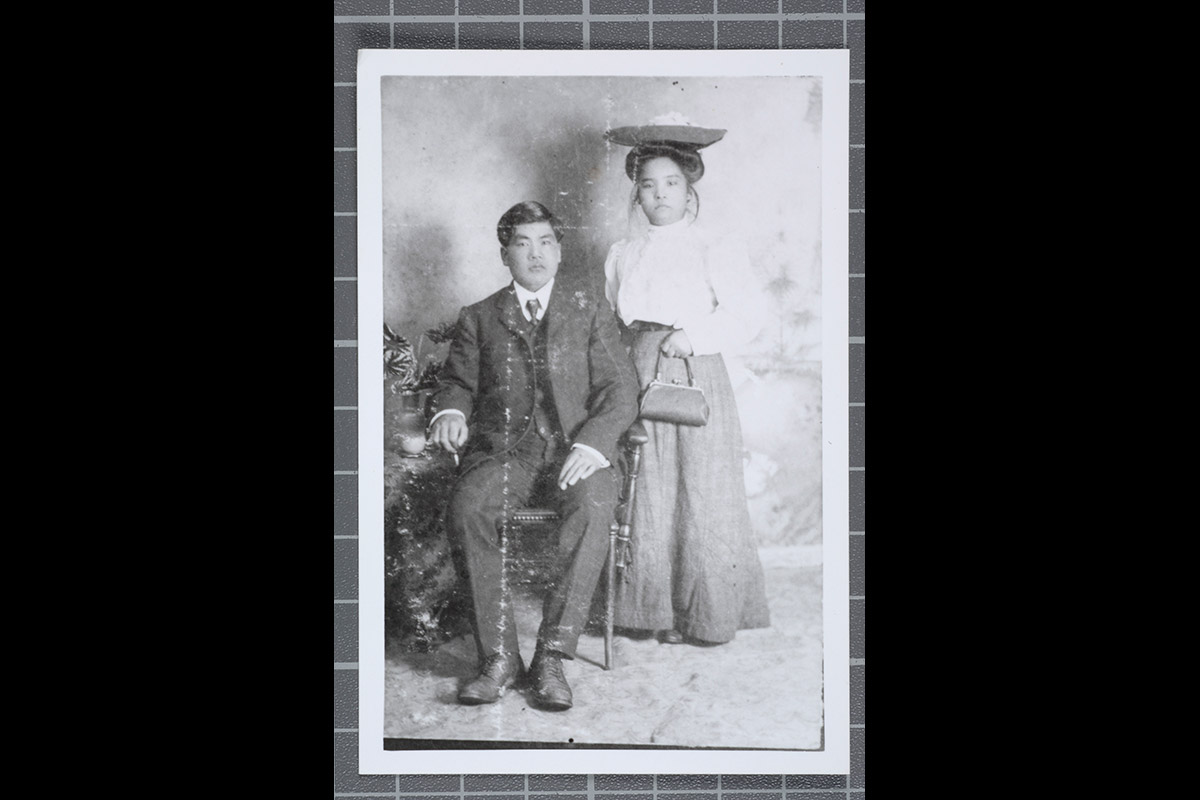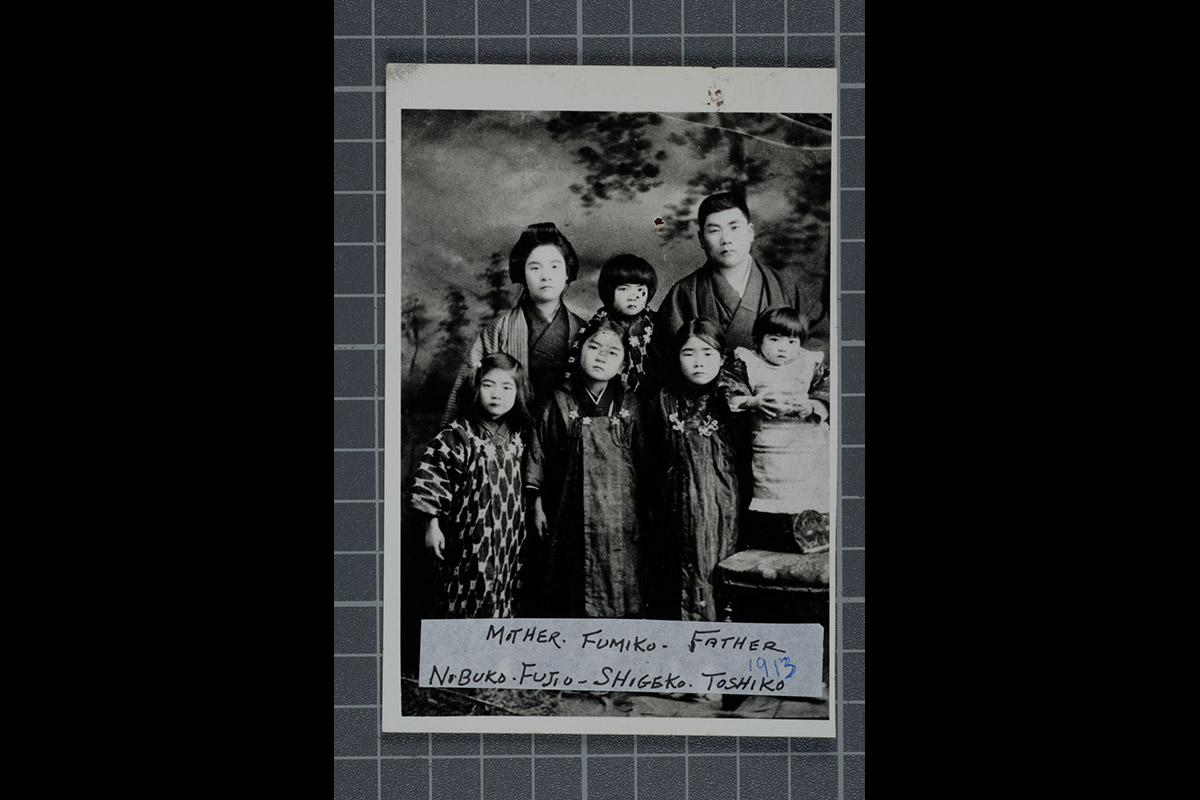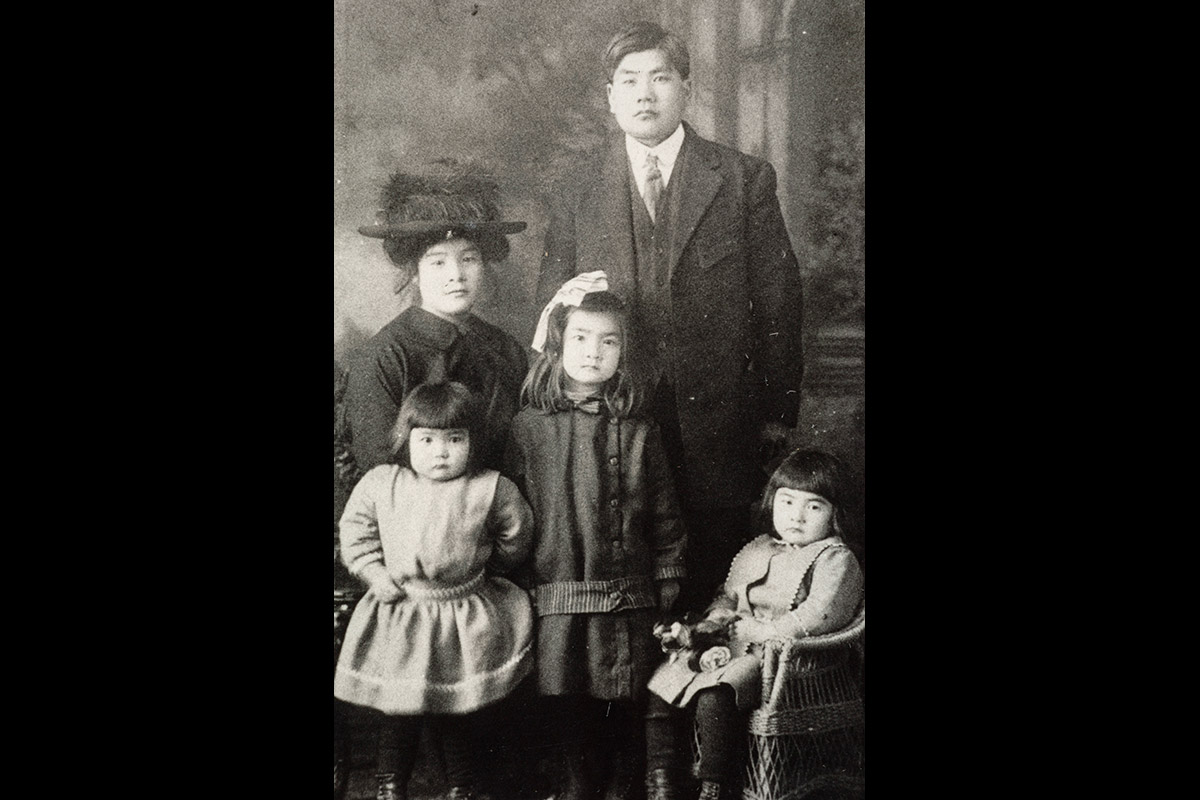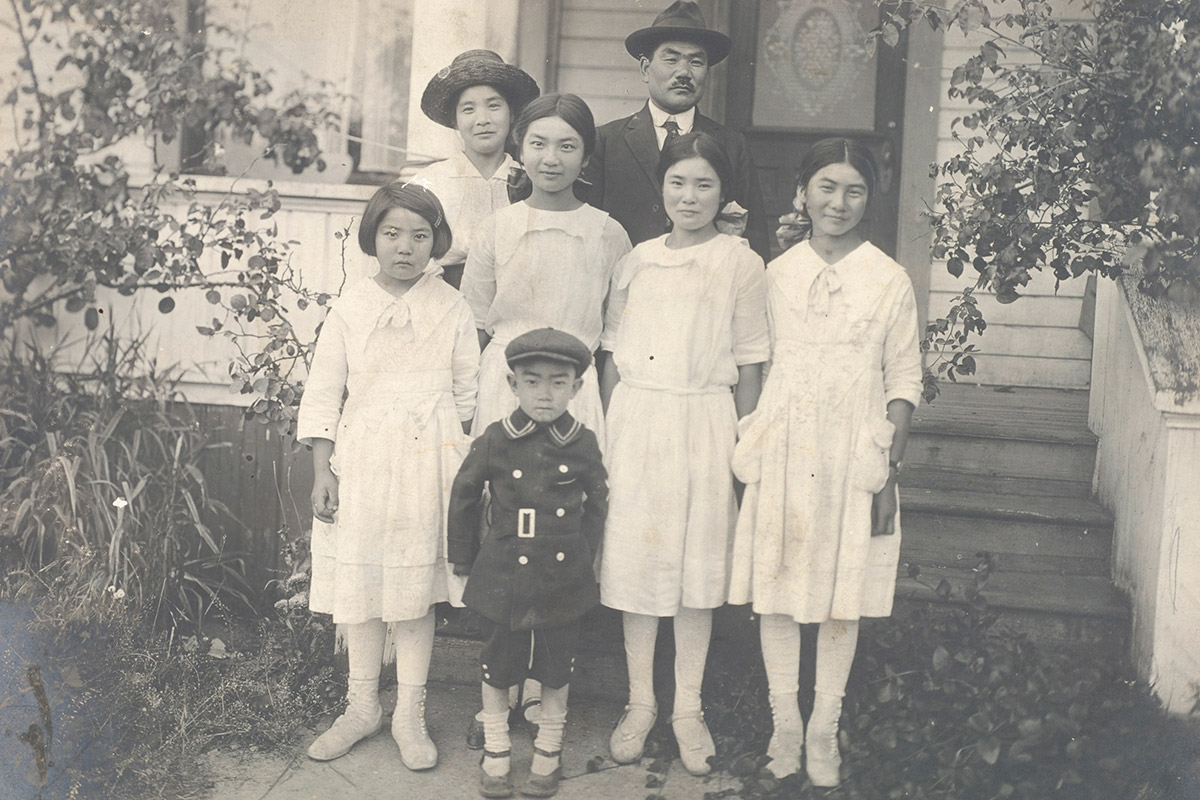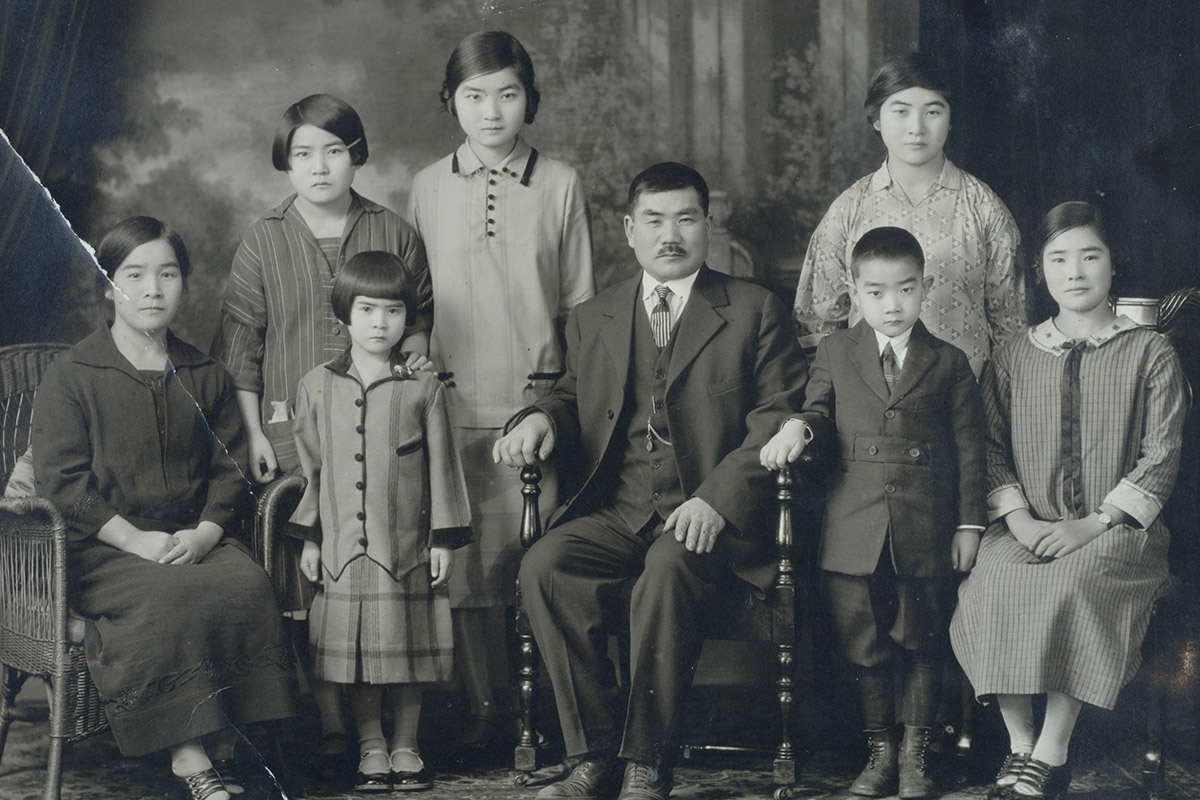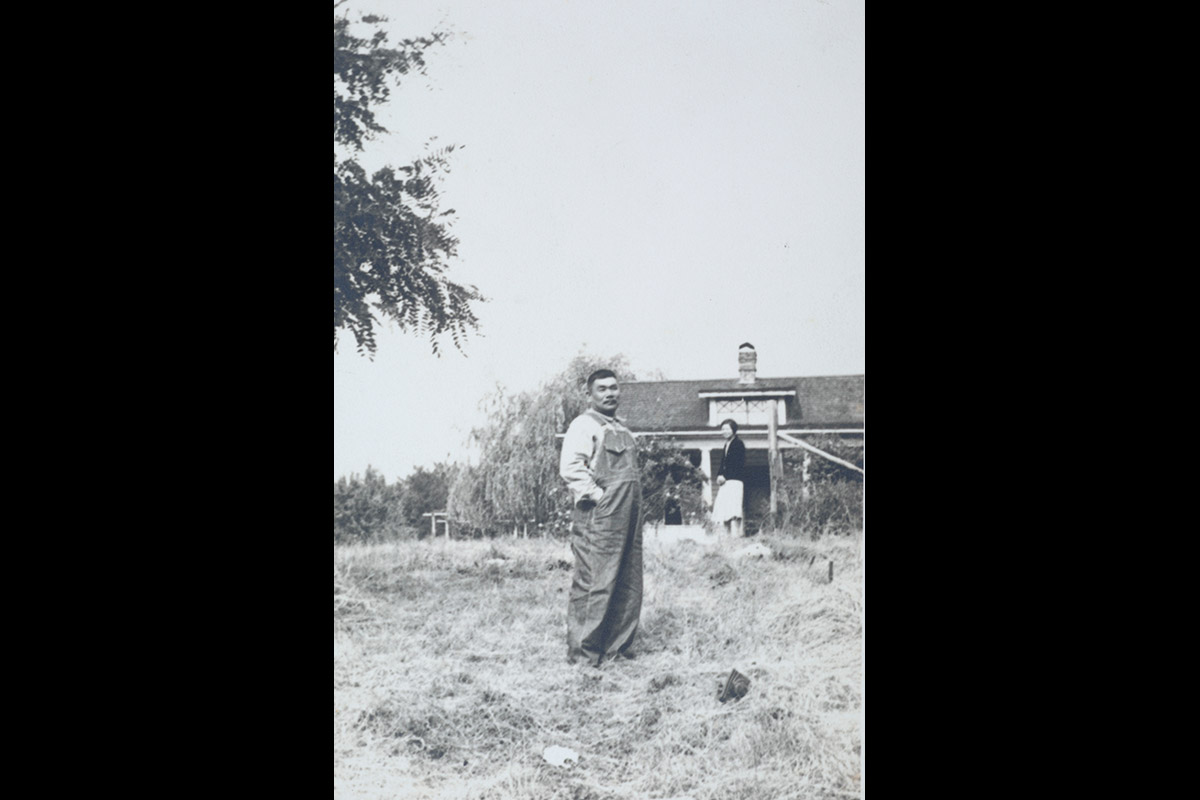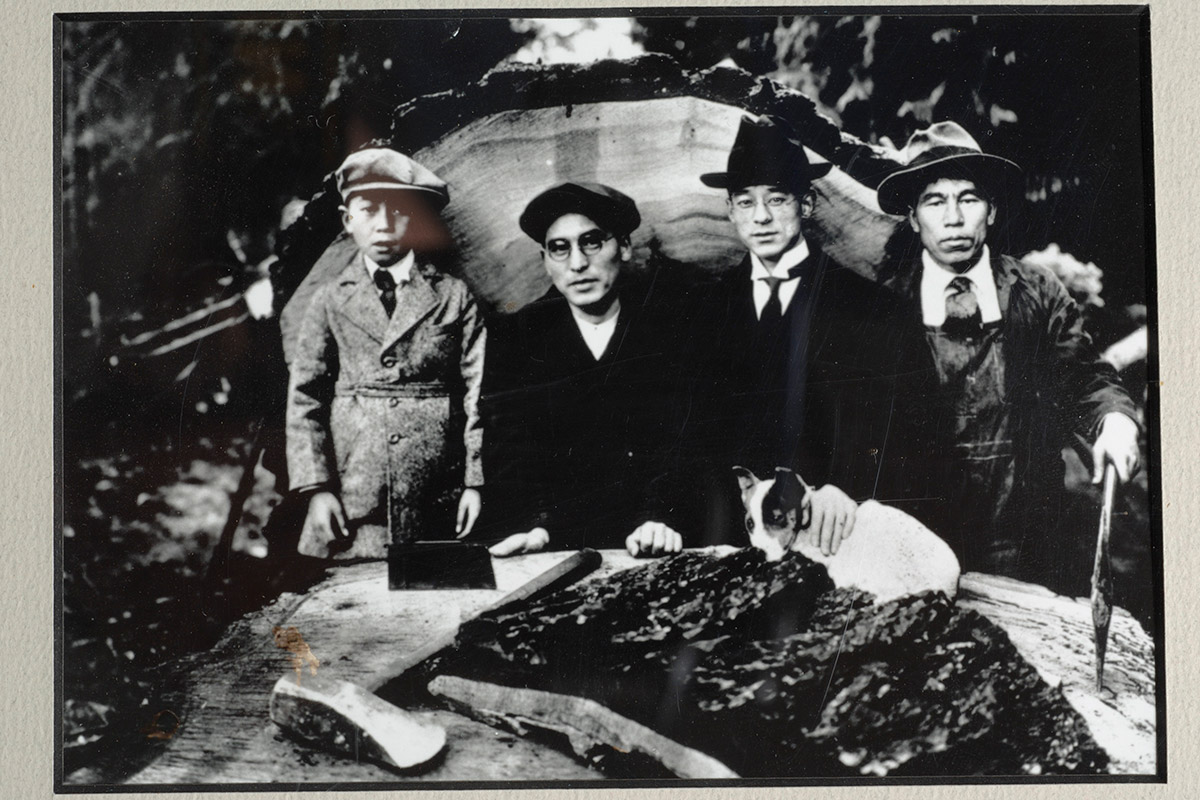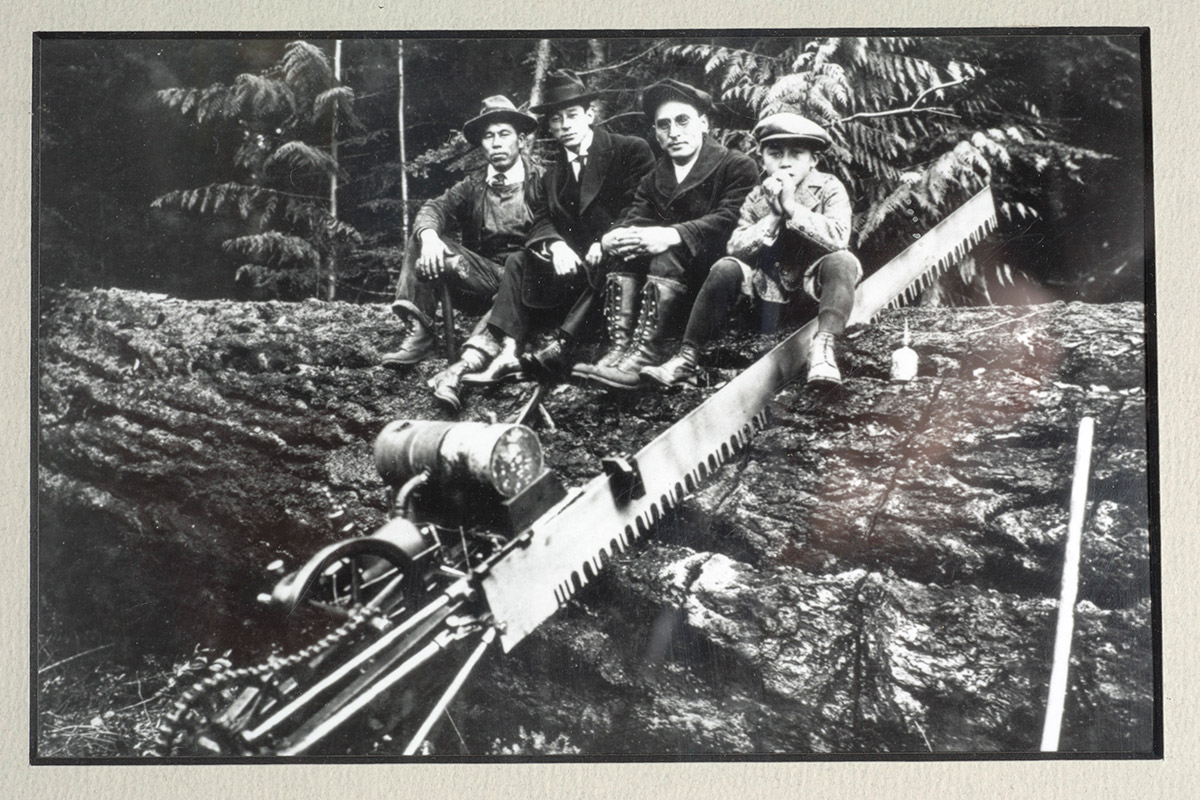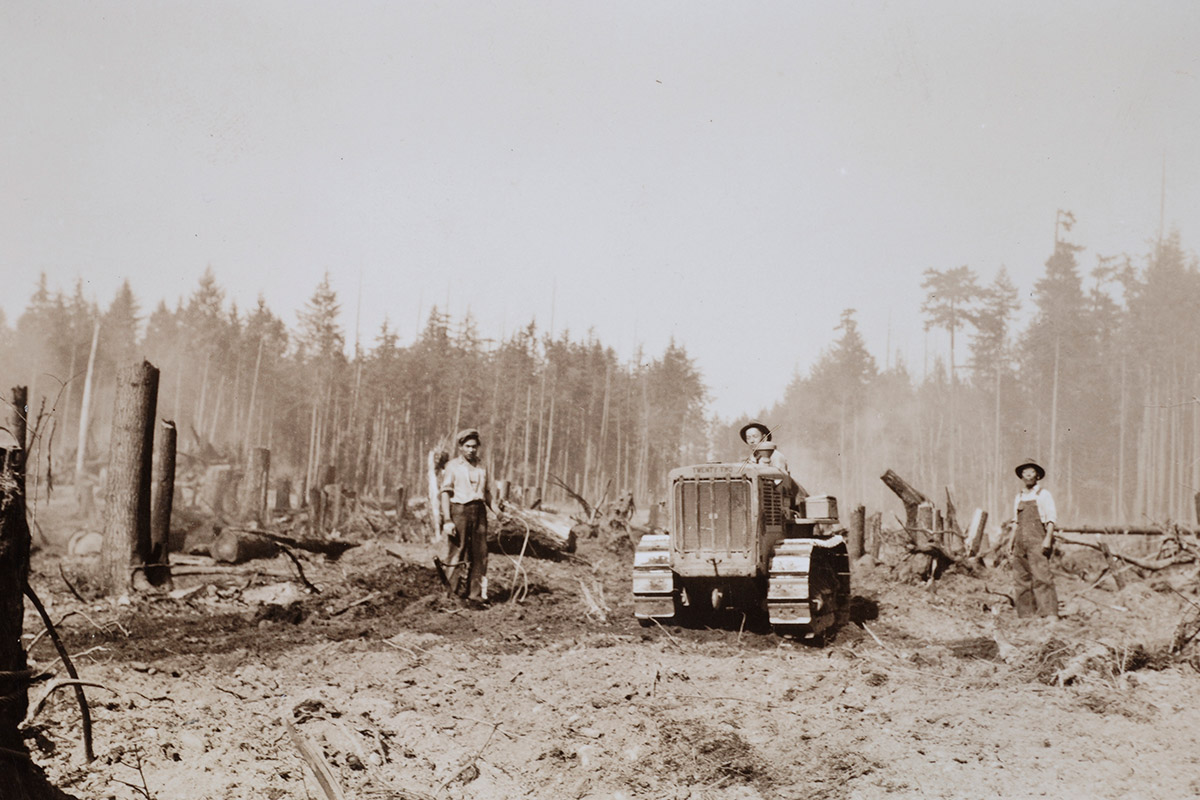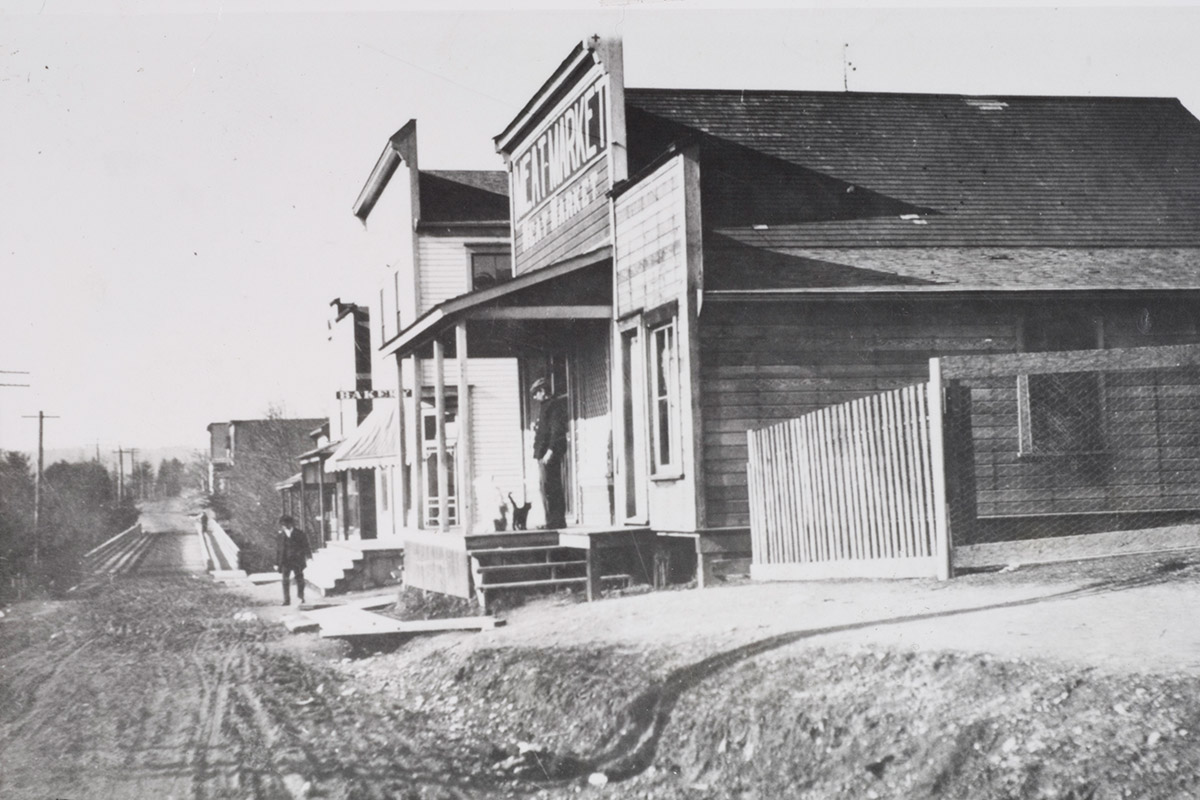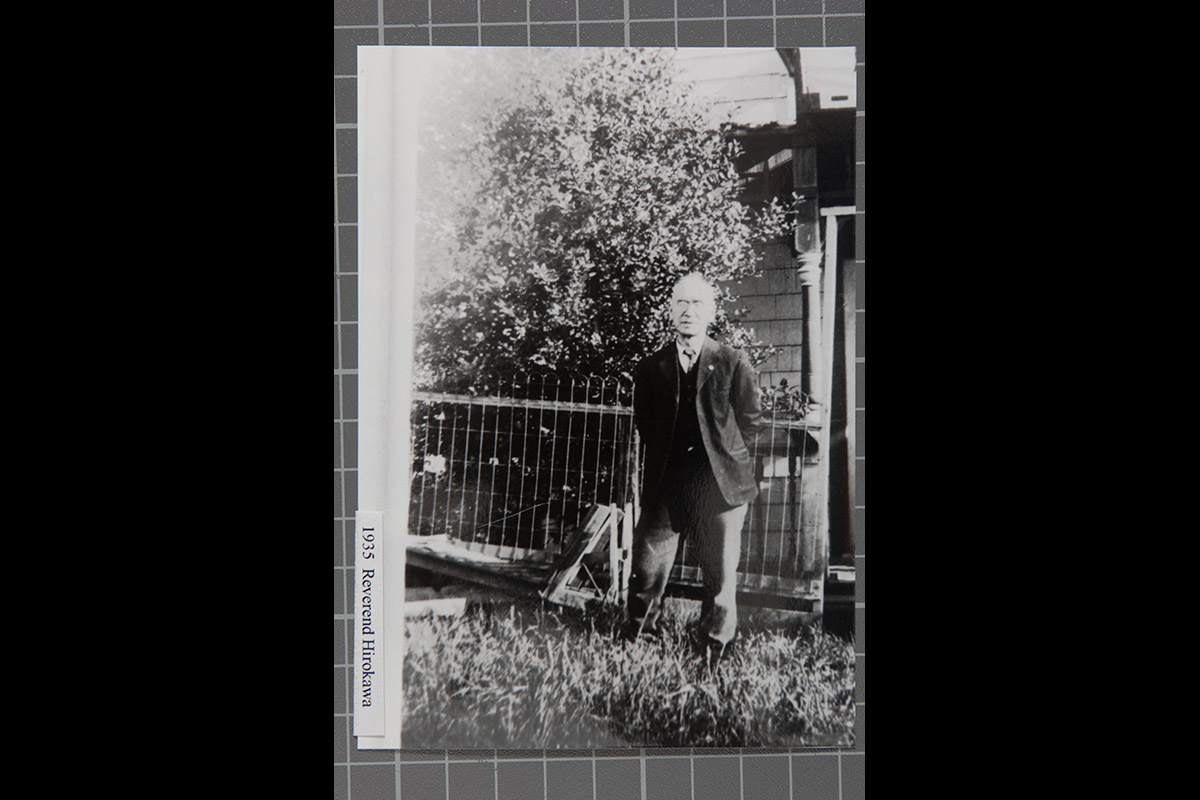The first Japanese arrived on Bainbridge Island in the 1880's, finding work alongside immigrants from around the world — Finland, Austria, Hawaii, Italy, China, and other locales — at the soon–to–be preeminent Port Blakely Mill Co. Most were laborers, although some, like Torazo Nakao, were given positions supervising others. As the men became secure in their jobs, they brought wives to join them. Soon a thriving village of Yama grew on the hillside above the mill, housing more than fifty families.
It was nestled between the so–called "Dagotown," a Hawaiian village, and a settlement of Native Americans from nearby Suquamish. Torazo and Kuma Nakao raised eight children in Yama, establishing one of Bainbridge Island's most esteemed families. Presaging things to come, the Moritani family began farming strawberries in 1908.
Slideshow
This is a collection of photos and artifacts of the Issei (first generation Japanese Americans) who immigrated to the US from Japan. Most came as bachelors to work in the Port Blakely Mill. Soon they married, raised children, and built homes in a small hillside village called Yama on land owned by the mill. When the mill closed many of these families remained on Bainbridge Island as farmers and small business owners.
 This Japanese bowl or cup was found at the site of Yama, the Japanese village at Port Blakely. (Credit: Bainbridge Island Historical Society. Digitally photographed by Fenwick Publishing)
This Japanese bowl or cup was found at the site of Yama, the Japanese village at Port Blakely. (Credit: Bainbridge Island Historical Society. Digitally photographed by Fenwick Publishing) The enterprising "General" Tamegoro Takayoshi provided several amenities for the townsfolk of Yama including: a grocery and laundry, an ice cream parlor that doubled as a dance hall, a photography studio, a watch repair shop, and a tea house. (Credit: Bainbridge Island Historical Society. Digital reproduction by Fenwick Publishing)
The enterprising "General" Tamegoro Takayoshi provided several amenities for the townsfolk of Yama including: a grocery and laundry, an ice cream parlor that doubled as a dance hall, a photography studio, a watch repair shop, and a tea house. (Credit: Bainbridge Island Historical Society. Digital reproduction by Fenwick Publishing) Also in Yama there were a hotel, two restaurants, a bakery, three Japanese bathhouses, two barbershops, and a tofu shop. (Bainbridge Island Historical Society Collection, Henry Larson Collection.)
Also in Yama there were a hotel, two restaurants, a bakery, three Japanese bathhouses, two barbershops, and a tofu shop. (Bainbridge Island Historical Society Collection, Henry Larson Collection.) With lumber donated by the mill, Japanese immigrants built these homes along the hillside above Port Blakely harbor. Yama housed some 300 residents in about fifty homes. After the mill closed in the early 1920s the town was demolished. Today there is very little evidence of this bustling town. (Bainbridge Island Historical Society Collection, credit Viola Lund)
With lumber donated by the mill, Japanese immigrants built these homes along the hillside above Port Blakely harbor. Yama housed some 300 residents in about fifty homes. After the mill closed in the early 1920s the town was demolished. Today there is very little evidence of this bustling town. (Bainbridge Island Historical Society Collection, credit Viola Lund) Though simple and unpainted on the outside, these homes were brightly colored and wallpapered on the inside, filled with personal items to make each a unique and warm dwelling. (Bainbridge Island Historical Society Collection, credit Viola Lund)
Though simple and unpainted on the outside, these homes were brightly colored and wallpapered on the inside, filled with personal items to make each a unique and warm dwelling. (Bainbridge Island Historical Society Collection, credit Viola Lund) The Katayama farm was located at the corner of Cave Avenue and Winslow Way in downtown Winslow.
The Katayama farm was located at the corner of Cave Avenue and Winslow Way in downtown Winslow. After immigrating to the US in the early 1900s, the Kouras lived in Seattle then moved to Bainbridge Island around 1925. Originally the Kouras farmed strawberries off of High School Road, near Madison Avenue. Then, a few years before WWII, they began farming where Meadowmeer golf course is located today off of Koura Road.
After immigrating to the US in the early 1900s, the Kouras lived in Seattle then moved to Bainbridge Island around 1925. Originally the Kouras farmed strawberries off of High School Road, near Madison Avenue. Then, a few years before WWII, they began farming where Meadowmeer golf course is located today off of Koura Road. Many Issei, first generation, bachelor men immigrated to the US to find a better living. After establishing themselves in the US, many returned to Japan to find a bride or arranged for a picture bride to join them in this country.
Many Issei, first generation, bachelor men immigrated to the US to find a better living. After establishing themselves in the US, many returned to Japan to find a bride or arranged for a picture bride to join them in this country. Tomokichi Nishinaka immigrated to San Francisco in the early 1900s. When he sent for his bride in 1906 Tomie's ship was re-routed to Seattle because of the San Francisco earthquake. Tomokichi got word of this and met Tomie in Seattle where they settled and started a family.
Tomokichi Nishinaka immigrated to San Francisco in the early 1900s. When he sent for his bride in 1906 Tomie's ship was re-routed to Seattle because of the San Francisco earthquake. Tomokichi got word of this and met Tomie in Seattle where they settled and started a family. After living in Seattle and working in Bellevue in the lumber business, Tomokichi decided to move his family to Bainbridge Island to begin farming. He and Tomie eventually had four more daughters. In 1913 the entire Nishinaka family was reunited in Japan on a short family visit. Left to right. Back: Tomie, Fumiko, Tomokichi. Front: Nobuko, Fujio, Shigeko, Toshiko
After living in Seattle and working in Bellevue in the lumber business, Tomokichi decided to move his family to Bainbridge Island to begin farming. He and Tomie eventually had four more daughters. In 1913 the entire Nishinaka family was reunited in Japan on a short family visit. Left to right. Back: Tomie, Fumiko, Tomokichi. Front: Nobuko, Fujio, Shigeko, Toshiko As an infant Shigeko, the eldest Nishinaka sibling, was sent to live in Japan with relatives. Eventually three of her other sisters, Fujio, Nobuko, and Fumi would join her in Japan for education. All four were not happy to be separated from their family at such a young age. Left to right. Back: Tomie and Tomokichi. Front: Fumiko (2yr), Fujio (7yr), Nobuko (4yr)
As an infant Shigeko, the eldest Nishinaka sibling, was sent to live in Japan with relatives. Eventually three of her other sisters, Fujio, Nobuko, and Fumi would join her in Japan for education. All four were not happy to be separated from their family at such a young age. Left to right. Back: Tomie and Tomokichi. Front: Fumiko (2yr), Fujio (7yr), Nobuko (4yr) Finally, in 1918, the entire Nishinaka family was reunited on Bainbridge Island. Here they are all dressed up for a Bainbridge Island Japanese Picnic. Left to right. Back: Tomie and Tomokichi. Front: Fujiko, Fujio, Takeo, Shigeko, Nobuko. Midori is hiding behind the curtains. Bainbridge Island, WA.
Finally, in 1918, the entire Nishinaka family was reunited on Bainbridge Island. Here they are all dressed up for a Bainbridge Island Japanese Picnic. Left to right. Back: Tomie and Tomokichi. Front: Fujiko, Fujio, Takeo, Shigeko, Nobuko. Midori is hiding behind the curtains. Bainbridge Island, WA. Just before the US entered WWII, Tomokichi and Tomie took their two youngest children, Midori and Takeo, back to Japan. The four eldest daughters remained on Bainbridge Island where they married and raised families. Left to right: Tomie, Fumiko, Midori, Fujio, Tomokichi, Takeo, Nobuko, Shigeko.
Just before the US entered WWII, Tomokichi and Tomie took their two youngest children, Midori and Takeo, back to Japan. The four eldest daughters remained on Bainbridge Island where they married and raised families. Left to right: Tomie, Fumiko, Midori, Fujio, Tomokichi, Takeo, Nobuko, Shigeko. Tomokichi purchased land in the name of his eldest daughter, Shigeko, who was born in Seattle. As a Japanese national he could not own land nor could he become a US citizen. The Nishinaka farm is located off Battle Point Drive at Miller Road near Bainbridge Gardens.
Tomokichi purchased land in the name of his eldest daughter, Shigeko, who was born in Seattle. As a Japanese national he could not own land nor could he become a US citizen. The Nishinaka farm is located off Battle Point Drive at Miller Road near Bainbridge Gardens. Like many immigrants who came to Bainbridge Island, these men cut the trees for processing in the Port Blakely mill.
Like many immigrants who came to Bainbridge Island, these men cut the trees for processing in the Port Blakely mill. After working for the mill for a short while Zenhichi Harui and his brother Zenmatsu Seko (he took his wife's last name) started a small fruit and vegetable farm on New Brooklyn Road. In 1913 the brothers started the Bainbridge Gardens and Nursery located on Miller Road and Battle Point Drive.
After working for the mill for a short while Zenhichi Harui and his brother Zenmatsu Seko (he took his wife's last name) started a small fruit and vegetable farm on New Brooklyn Road. In 1913 the brothers started the Bainbridge Gardens and Nursery located on Miller Road and Battle Point Drive. Bainbridge Island, WA. Johnnie M, Kiyo Nagatani, and Ichiro Nagatani.
Bainbridge Island, WA. Johnnie M, Kiyo Nagatani, and Ichiro Nagatani. View looking west on Winslow Way near where the intersection with highway 305 is today. The Nakata family had several enterprises before the war including a berry farm, a barbershop, a laundry, a meat market and a grocery. (Credit: University of Washington. Digital reproduction by Fenwick Publishing from Bainbridge Historical Society image)
View looking west on Winslow Way near where the intersection with highway 305 is today. The Nakata family had several enterprises before the war including a berry farm, a barbershop, a laundry, a meat market and a grocery. (Credit: University of Washington. Digital reproduction by Fenwick Publishing from Bainbridge Historical Society image) In 1925 Reverend Hirakawa and Reverend F. Okazaki began to hand-build the small Winslow Japanese Baptist Church on the corner of property owned by Takeo Sakuma near the intersection of Wyatt and Finch Roads. Rev. Hirakawa would continue to work on this church for the next two years.
In 1925 Reverend Hirakawa and Reverend F. Okazaki began to hand-build the small Winslow Japanese Baptist Church on the corner of property owned by Takeo Sakuma near the intersection of Wyatt and Finch Roads. Rev. Hirakawa would continue to work on this church for the next two years.

